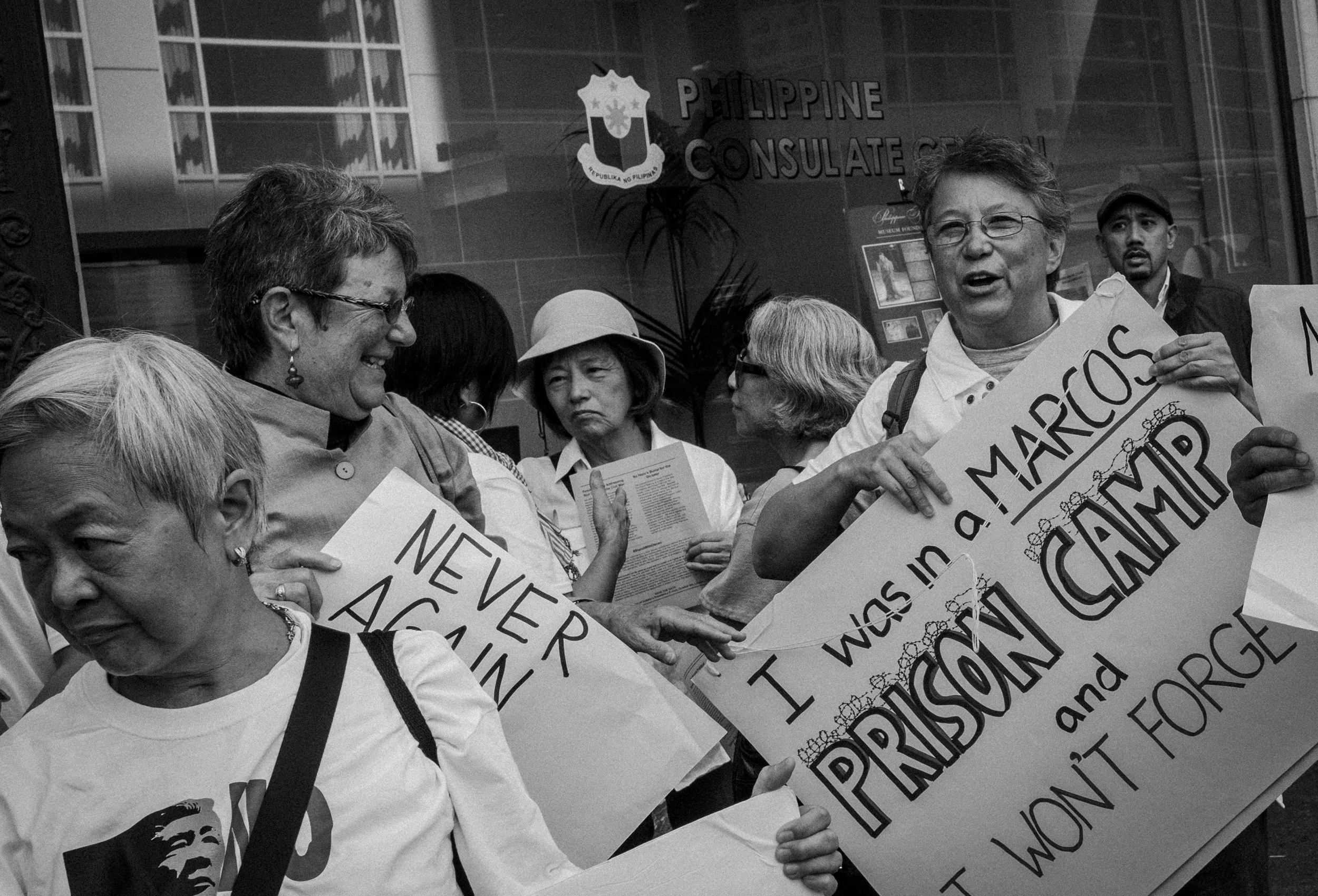![PROBLEM SOLVED. Bayas Maliog-liog Small Fisherfolk Association president Robert Barlas says the artificial reefs solved their townâs problem with fish supply. Photo by David Lozada/ Rappler]()
ILOILO, Philippines – What happens when fishermen run out of fish to catch?
This was the dilemma of Robert Barlas of the coastal village of Bayas in Estancia town, Northern Iloilo just last year. Due to illegal fishing activities and unsustainable fishing methods, many coral reefs near the island-village were depleted of its fish population.
“The main livelihood of people in this island is to catch fish and other marine creatures like shrimp and squids… The fish were in real short supply. We had to go far off the coast to find fish and it was really expensive,” Barlas recalled.
Aside from spending more resources on gas just to get enough catch, the fishermen also had to deal with harsh weather environments at the sea.
“When the waves are high, we couldn’t go far. We had to wait for the right weather just so we can fish,” Barlas, who is the president of the Bayas Maliog-liog Small Fisherfolks Association (BMSA), added.
Bayas was not the only village that experienced the problem. Other island and coastal villages in the towns of Carles, Estancia, and Concepcion in northern Iloilo also had fish shortages since illegal fishing was widespread in the area.
According to Rosanna Pandes, community organizer of the Iloilo Caucus of Development NGOs (Iloilo CODE), illegal fishing has been destroying the livelihood of small fisherfolks in the region in the past decade.
“It’s a major problem here in northern Iloilo. It takes fishermen more than 12 hours to catch enough fish, typically from 2 am to 4 pm, because the coral reefs nearby have already been destroyed due to illegal fishing and they have to go far off shore,” Pandes said.
‘Jackstones’ repopulate fish
In an effort to help fisherfolks in Northern Iloilo get back their livelihood, Iloilo CODE help in the deployment of jackstone-shaped artificial reefs in several communities. Made of concrete and steel, the artificial reefs serve as breeding grounds for fish and other sea creatures once immersed under water.
Paired with the effort to empower fishermen as guardians of their own waters and to establish their own marine protected areas (MPAs), the program has delivered impact for the partner communities.
![REPLENISHING RESOURCES. Jackstone-type artificial reefs lie on the shores of Barangay Bancal in Carles town. These serve as breeding grounds once immersed under water. Photo by David Lozada/ Rappler]()
“We have deployed around 100 artificial reefs around a year ago in our marine protected areas. Just after 3 months, we saw that many fish already spawned there. There was a big spike in the fish supply,” Barlas said.
Barlas added: “We no longer have to go far to catch fish. Even if the waves are strong, we can go to sea because we don’t have to sail far from shore.”
The BMSA also prohibited fishing from the shore up to the MPA. This, Barlas added, lessened the cases of illegal fishing.
Preserving the sea
The experience is the same for Agapito Dumaguin of nearby Barangay Bancal in Carles town, who said the jackstones also serve as protection from illegal fishing practices.
“Aside from being the new breeding grounds of fish, the jackstones prevent illegal fishermen from trolling. Their fishnets get caught in the jackstones,” the 56-year-old said.
Dumaguin, who has been a fisherman since he was 12, emphasized the importance of preserving the sea so the communities can continue to enjoy its abundance.
“The number of fishermen have been continually increasing. That’s one of my concerns as the president of the Bancal Fishermen’s Association (BFA), I want to preserve our MPA so the fish won’t run out. If we don’t do this, we’ll run out of fish in a few years,” he added.
BFA currently takes care of around 80 hectares of MPAs that was assigned to them by the Bureau of Fisheries and Aquatic Resources (BFAR-6).
Pandes said the reef rehabilitation project was originally implemented in Barosbos village in Carles town before Super Typhoon Yolanda hit the region in November 2013. After the typhoon, the organization saw an opportunity to expand the project.
![GUARDIANS. Bancal Fishermenâs Association president Agapito Dumaguin emphasizes the importance of preserving and guarding the sea from illegal activities. Photo by David Lozada/ Rappler]()
“Since we had funding with Christian Aid, we decided to make it a component of the ‘Building Back Better’ project because we really saw its impact in the community,” Pandes added.
The project was initially met with resistance from some fisherfolks, Pandes recalled. But when people saw how the 'jackstone' artificial reefs increased the fish population, they learned to appreciate the effort.
“Those who used to do illegal activities like dynamite fishing are now part of the fisherfolks organizations. They saw the result of the project and they were encouraged to stop their illegal activities. Now, they help guard the seas,” she noted.
While the artificial reefs work miracles for the fish supply, Dumaguin added that fisherfolk should really play an active role in curbing illegal activities.
“We still need to guard our areas. Day and night we guard it. We really preserve and take care of it because it sustains our communities,” he concluded.
Regulation and governance
The concerns by small fisherfolk associations are validated by reports from the Iloilo Provincial Bantay Dagat Task Force (IPBTF) and BFAR-6.
In spite of relentless efforts by the provincial government, municipal governments in Northern Iloilo and by community-based bantay dagat groups, “illegal fishing remains a major concern in the Visayan Sea,” said Police Officer Charlie Asturias, Bantay Dagat team leader.
Most of the illegal fishing activities caught by the task force along the coast of Estancia, Carles and Concepcion towns use dynamite, cyanide, trawl, round haul, and “hulbot-hulbot” or the use of Danish Seine (a type of net). All of these fishing practices are prohibited under municipal ordinances governing its coastal waters or are strongly regulated under Philippine laws.
From January to May 2016, the IPBTF reported violations of around 76 motorboats using trawl and round haul, more than 10 fishermen for violation of Fisheries Administrative Order 246 banning the use Danish Seine, and 7 for dynamite fishing as violation of the amended Fisheries Code or Republic Act 10654.
The Iloilo provincial government together with BFAR-6 has stepped up its efforts to closely guard the coast of Northern Iloilo and the Visayan Sea.
BFAR-6 Regional Director Remia Aparri stressed that the agency has committed to intensify enforcement of fisheries laws by permanently deploying one of its ships for monitoring, control and surveillance work. “It will be stationed in Higantes Island in Carles to support Bantay Dagat Seaborne patrols,” said Aparri.
Moreover, the governors of Negros Occidental, Masbate, Cebu, and Iloilo have previously agreed to declare the Visayan Sea as a National Marine Reserve Area. It calls the grouping as the Alliance of Province for the Protection of the Visayan Sea.
The alliance aims to have the 10,000 square kilometers area of the Visayan Sea declared as open only for small, marginal or subsistence fishermen from Congress, and eventually from the President. It also plans to collectively impose heavy restrictions on commercial fishing in the area in order to protect coral reefs and its rich marine habitat.
‘For the next generation’
![FUTURE INVESTMENT. Fisherfolk in Barangay Daculan in Estancia town plant mangroves so their children will benefit from more fish supply in the future. Photo by David Lozada/ Rappler]()
Mangrove shoots line more than 7 hectares of shoreline in Barangay Daculan in Estancia town. This mangrove plantation is part of the local fisherfolk’s efforts to replenish the fish supply in their area.
“We created this mangrove plantation because we know this will help us in the long run to repopulate the fish. Many sea creatures will start living here so we’ll have bigger catches. This will help the people’s livelihood,” Saldy Bullos, a former village chief, said.
The fisherfolk of Daculan was urged and supported by Iloilo CODE and Christian Aid to create the mangrove plantation because of the need to rehabilitate the village’s coastal areas.
“We volunteer twice a month to maintain these mangroves. We clean the area when there are plastic thrash so the mangroves can grow to their full potential. If you don’t take care of these plants, they will die because of the trash and the strong waves that topple them,” Bullos said.
While the fisherfolk take good care of the mangrove plantation, they know that it is not them that will reap its benefits.
“We’re doing this for the next generation. We do this so that our children and our grandchildren will have enough fish supply. These mangroves will grow and help them,” Bullos concluded.
‘Sustainable and replicable’
For Pandes, communities really must take the lead in the reef projects because they are the ones benefitting from the seas.
“We cannot solely rely on the government to counter illegal fishing activities because they cannot monitor all illegal activities. There are so many coastal villages in this area,” she said.
The best part about the initiative, Pandes noted, is that it is easily replicable to other areas that are also plagued with illegal fishing and unsustainable fishing practices.
“It’s easily replicable especially if there are existing groups that can be mobilized or tapped. All we have to do is to increase and enhance their awareness level and help them acquire capacity,” she said.
Pandes concluded: “We need to encourage communities to be partners with government and help other groups to reach their goals in natural resource management.”
As for the fisherfolks of Northern Iloilo, they will continue to take care of the sea – as they hope it will continue to sustain the communities’ livelihood in the generations to come. – With a report from Ted Alwin Ong/ Rappler.com
This is part of a series of stories on Iloilo CODE and Christian Aid's post-Yolanda project "Rebuilding for the Better." From August 9 to 11, a team from the organizations took MovePH to the rehabilitation sites in northern Iloilo to evaluate and document the completion of the project. The rehabilitation project covers 4 themes: renewable energy, shelter, coastal management, and livelihood. Check out the other stories here:
![]()











































